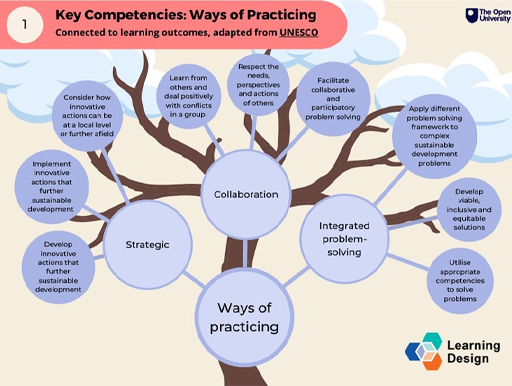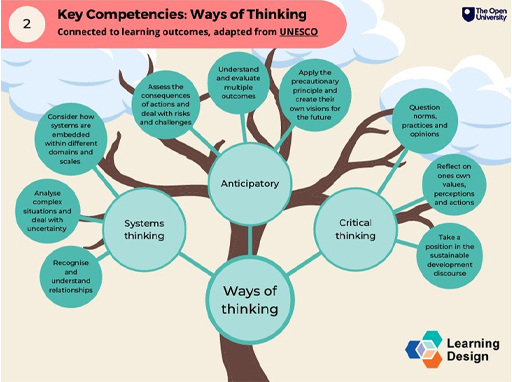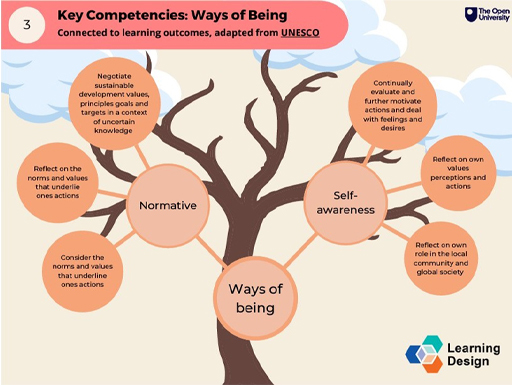1.1.5 Competencies
Learning outcomes are sometimes expressed using competencies, rather than skills, knowledge/understanding and values. Competence can be thought of as the blend of knowledge, skills, values and behaviours necessary for success in a particular real-life activity or a set of activities (McCowan, 2021, p. 6).
An example of a competency framework is provided within a document that sets out learning objectives for achieving the sustainable development goals (SDGs) (UNESCO, 2017). Learning designers at The Open University have developed the following ‘tree’ graphics to help educators working in higher education visualise these competencies and have conversations about how learners might be supported to achieve them. These graphics can be downloaded here for later reference [Tip: hold Ctrl and click a link to open it in a new tab. (Hide tip)] .
Competencies’ blending of knowledge/understanding, skills and values/attitudes may be seen as a progressive move ‘beyond inert knowledge content and rigid disciplinary approaches and towards multidimensional and real-life abilities’ (McCowan, 2021, p. 6). But they are not without their problematic elements. McCowan (2021, p. 6) suggests that:
…competencies represent an exogenous frame for learning: they determine what individuals should be able to do and how they should act on the basis of tasks or jobs that need completing. That may be entirely appropriate in assessing individuals for a particular form of employment, but fall short of a holistic vision of education based on learner agency. Competence-based frameworks do not always contain a sufficient element of criticality and reflection, and in this regard can be more akin to training than education.
When developing learning outcomes for climate education, paying close attention to the elements they represent can be useful in ensuring that a particular lesson, resource or course takes a holistic approach to the challenges, complexities and flux involved in addressing the climate emergency.
Activity 1 Reflecting on your current curriculum
- Reflect on any climate crisis-related teaching you’re already doing and make notes in the box below. Drawing on your study of this course, consider whether any additional elements relating to knowledge/understanding, skills and values/attitudes might usefully be added to your learning outcomes in order to address the climate emergency in a holistic way.
- Consider how any climate crisis-related teaching you’re already doing or planning relates to the different competencies identified in the ‘tree’ graphics above. Can you add any ‘leaves’ to the ‘trees’ to describe examples of ways in which learners in your context might be supported to achieve these competencies in practice?



